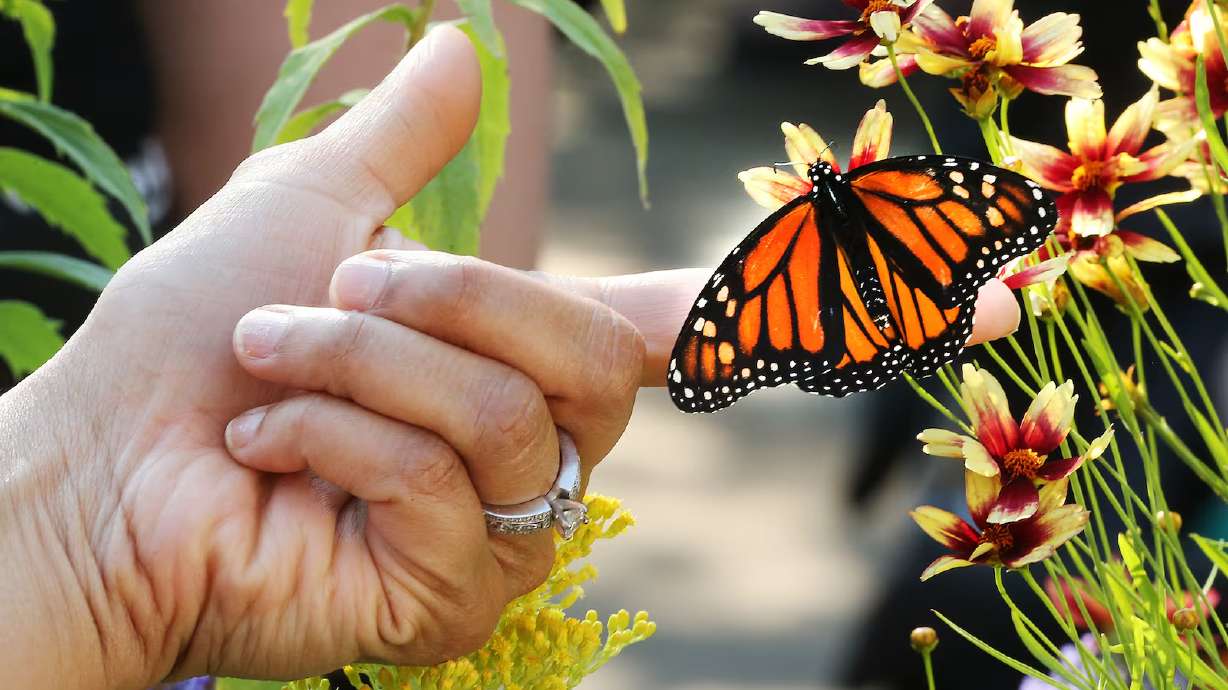Estimated read time: 3-4 minutes
- The U.S. Fish and Wildlife Service looking at further protections for the monarch butterfly.
- The monarch butterfly population has declined drastically, raising extinction concerns by 2080.
- Critical habitat designation is proposed in California, with public comments open until May 19.
SALT LAKE CITY — The U.S. Fish and Wildlife Service said it is reopening the public comment period for a proposed rule to list the monarch butterfly as a threatened species under the Endangered Species Act.
The extension comes as the Trump administration said Tuesday that it is reconsidering adding protections for the butterfly to evaluate if the insect is likely to become at risk for extinction, according to reporting from The Hill.
"Everyone can play a role in saving the monarch butterfly. Because of the species' general habitat use and wide distribution, all sectors of society have an opportunity to participate in a broad range of conservation efforts throughout the butterfly's range," the agency said in a press release.
In December, the federal government proposed listing the monarch as threatened, but it is a process that takes time.
These fragile insects travel between 1,200 and 2,800 miles or more from the northeast United States, and southeast Canada to the mountain forests in central Mexico.
With its notable orange and black markings, the monarch butterfly is one of the most recognizable insects in the world. In North America, monarchs are grouped into two long-distance migratory populations. The eastern migratory population is the largest and overwinters in the mountains of central Mexico. The western migratory population primarily overwinters in coastal California.
The marvel of the monarch
In the 1980s, over 4.5 million western monarchs flocked to overwintering grounds in coastal California. In the mid-1990s, an estimated 380 million eastern monarchs made the long-distance journey to overwintering grounds in Mexico, completing one of the longest insect migrations in the world.
But the agency says that today, the eastern migratory population is estimated to have declined by approximately 80%. The western migratory population has declined by more than 95% since the 1980s, putting the western populations at greater than 99% chance of extinction by 2080.
According to the World Wildlife Fund, adult monarch butterflies possess two pairs of brilliant orange-red wings, featuring black veins and white spots along the edges. Males possess distinguishing black dots along the veins of their wings. Each adult butterfly lives only about four to five weeks.
Milkweed is the only plant on which monarchs will lay their eggs and the only source of food for baby caterpillars. But urbanization has decimated the milkweed and given rise to the threat of the butterfly's extinction.
To assist with monarch conservation efforts, the service proposed critical habitat for the species at a portion of its overwintering sites in coastal California. Overwintering habitat provides an essential resting place for monarchs during the cold winter months and helps them prepare for breeding in the early spring.
In total, the agency wants to earmark 4,395 acres of critical habitat for the western migratory monarch population across Alameda, Marin, Monterey, San Luis Obispo, Santa Barbara, Santa Cruz and Ventura counties in California. A critical habitat designation imposes no requirements on state or private land unless the action involves federal funding, permits or approvals.
The reopening of the public comment period for the monarch butterfly was published Tuesday in the Federal Register reading room. The new 60-day public comment period opened Wednesday and will close on May 19. Information about how to submit comments can be found on regulations.gov by searching for docket number FWS-R3-ES-2024-0137.
Comments that were previously submitted do not need to be resubmitted as they are already incorporated into the public record and will be fully considered in the final listing determination.










